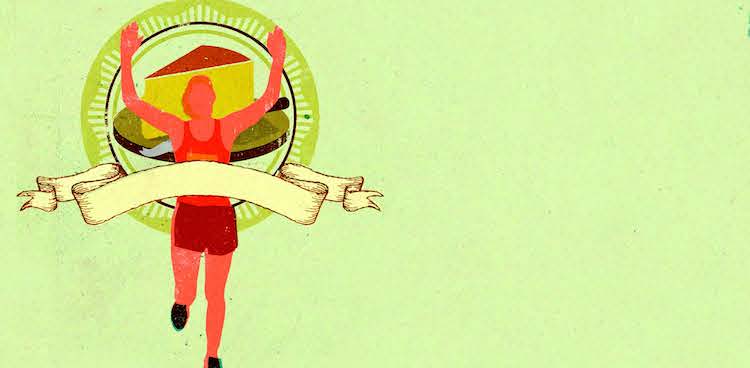
Eight years ago, I ran a marathon. Whenever anybody asks about it, I talk more about the training than the actual race. The training was the hard part; the most meaningful part; the quiet, intimate, challenging part. The race had its moments, of course. Around mile 15, below an echoey bridge, a fellow runner shouted, “I want a cheeseburger!”—prompting dozens of us to shout out our own cravings. And then there was the finish line. The sight of it so surprised me that I stopped to ask a race official for clarification.
After taking the American Cheese Society’s Certified Cheese ProfessionalTM Exam (CCPE) during the 2012 ACS conference in Raleigh, North Carolina, I felt the same way about the experience as I’d felt about my marathon: The big event itself was a flurry of anxiety, excitement, and relief, but the groundwork was what really stuck with me.
To prepare for the test, I scoured every cheese resource I could find. My apartment was littered with open books and note cards for the better part of a year. The study group organized by a few of us New York City cheesemongers was my saving grace. It was the equivalent of the all-important long runs that marathoners use to prepare for the big, 26.2-mile day.
We had three hours in which to take the CCPE. I scanned it for easy wins, then hunkered down to think through the more nuanced questions. I tried to recall winter evenings with my study crew, all of us around a table filled with cheese, beer, and chocolate. What had we decided about how light affects cheese? What are the differences between historical and non-historical USDA dairy import licenses? And please, dear memory, summon up the difference in milk-fat percentages between Guernsey and Ayrshire cows!
My first stumble came when I hit a question about the style and origins of Serpa, an imported cheese that I wasn’t very familiar with (prior to taking the test, I’d managed a domestic cheese program). I panicked. Was it an aged cheese or fresh? A Spanish cheese? An obscure little button from Greece? I quieted my mind and whispered the cheese’s name. I visualized the word on my computer screen. I relaxed. And then I landed: It had to be a traditional torta-style sheep’s milk cheese from Portugal. Moving right along.
I’ll never forget what it felt like to have pounded through 19 miles of that Chicago Marathon, only to know that I had seven more to go. Likewise, I’ll always remember how it felt to finish the exam—and realize that over an hour remained in which to second-guess my answers.
Afterward, we test-takers entered a torturous, monthlong limbo before results were announced. You could say I became a little nuts with the incessant email reloading and random exclamations of, “I’ll be fine, either way!” Then, much like the sight of that finish line in Chicago, the results caught me completely off-guard. I’d recently set up Twitter on my phone, and on a quiet evening in September the little machine began light- ing up. “Congrats!!” was what I saw, and I whooped loudly. I was officially a member of the inaugural class of ACS’s Certified Cheese Professionals.
There was, and still is, some mystery about what this certification will accomplish. I don’t know for sure, but a few experiences give me hope that the distinction will legitimize and add value to cheese professionals’ work. After I passed the exam, my bosses gave me a small yet meaningful raise. In early 2013, I felt ready to move on to a different setting, so I accepted a position managing a new shop in Brooklyn. When I asked my employers about their decision to hire me—to put a veritable stranger in charge of their huge investment—they explained that they’d purposely sought out candidates from that initial list of CCPs.



